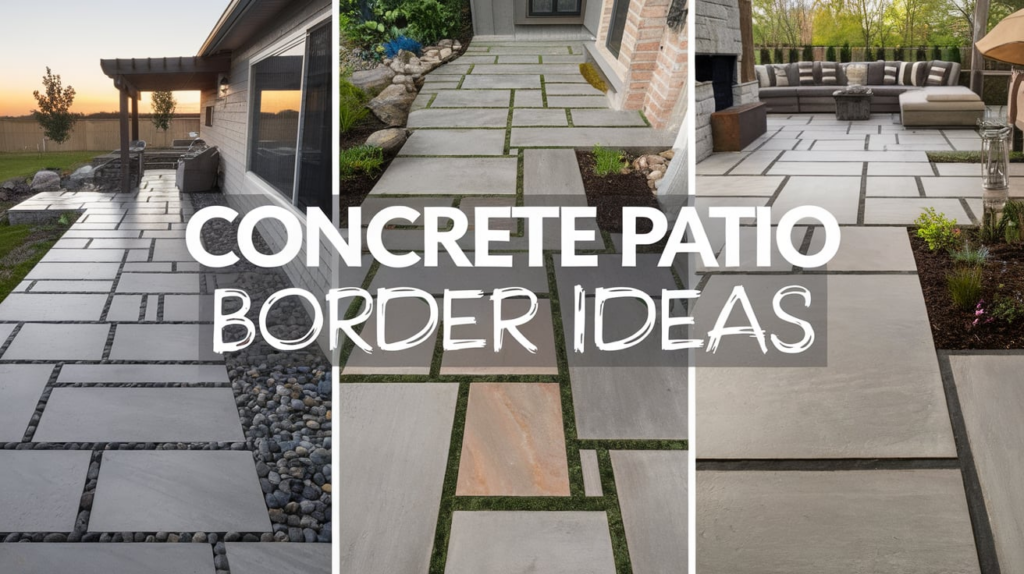Adding a border to your concrete patio is a simple way to make it look more finished and stylish. Borders can help define the space, make your patio stand out, and even prevent dirt and mulch from spilling over.
If you want something bold and modern or natural and classic, there’s a border style that will fit your patio perfectly. You can choose from brick, stone, metal, tile, or even plants to create a look you love. The right border can add color, texture, and shape, making your outdoor space feel more complete.
In this blog, I’ll discuss some of the best concrete patio border ideas and give you helpful tips on choosing the right one for your yard.
Benefits of Adding Borders to Your Concrete Patio
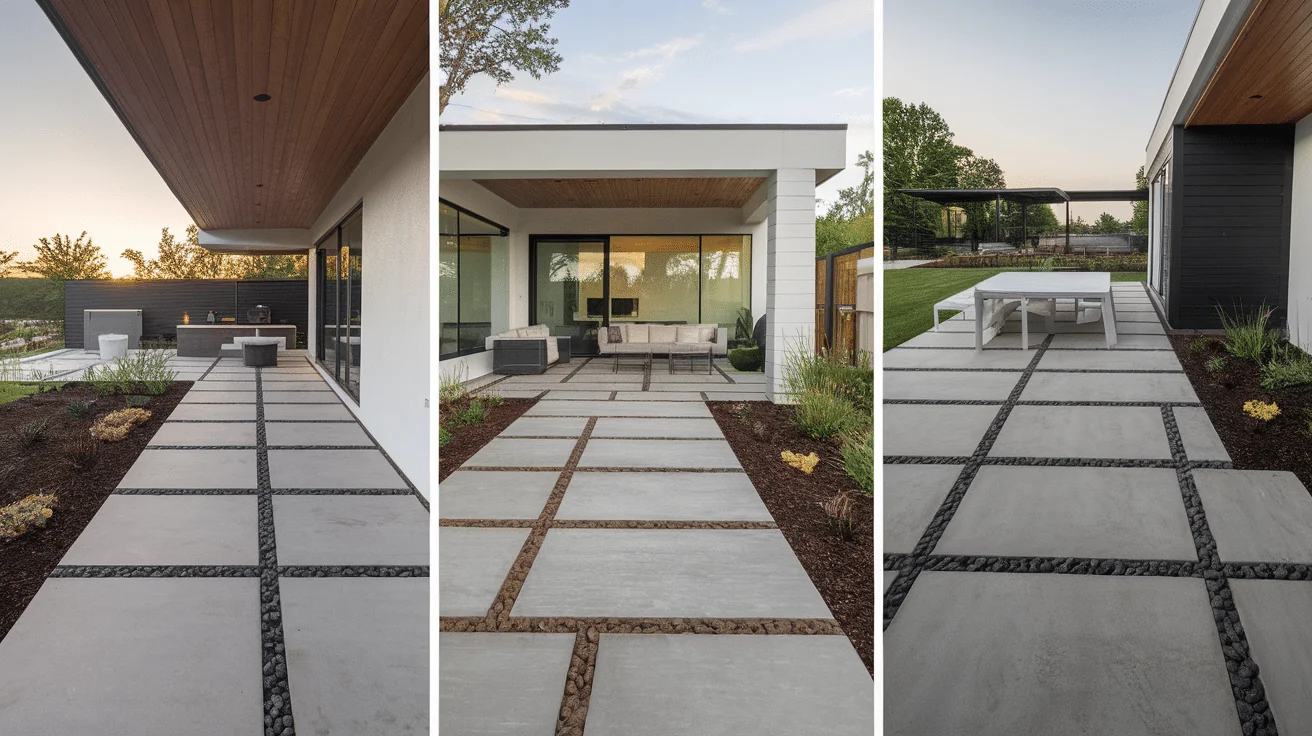
Adding a border to your concrete patio isn’t just about looks—it also helps in a lot of practical ways. Whether you’re redoing your patio or starting fresh, here’s why adding a border is a smart idea:
1. Makes Your Patio Look Finished: A border gives your patio a clean, polished look. It helps frame the space, just like a frame does for a picture. Without it, a patio can feel plain or incomplete.
2. Helps Define Spaces: Borders can separate your patio from the lawn, garden, or walkway, making your outdoor area feel more organized. This is great if you want to create different zones, like a dining space or a sitting area.
3. Prevents Cracks and Erosion: Borders help keep soil, grass, and mulch in place so they don’t slide onto your patio. They also reduce wear and tear on the edges, which can help stop cracking over time.
4. Adds Curb Appeal: A well-designed border can make your whole yard look better. Whether it’s brick, stone, or even plants, the right edge can boost your home’s style and value.
5. Makes Maintenance Easier: With a clear border, it’s easier to mow the lawn, sweep off debris, or keep mulch where it belongs. You’ll spend less time cleaning and more time enjoying your patio.
Adding a border doesn’t have to be fancy or expensive, but it can make a big difference in how your patio looks and works.
Factors to Consider When Choosing a Patio Border
Choosing the right border for your concrete patio is important. A good border can make your outdoor space look better and last longer. But before you decide, there are a few things you should think about.
1. Your Home’s Style and Look
Take a good look at your house and yard. Is your home modern, rustic, or more traditional? You’ll want a border that matches the overall style. For example, sleek metal or smooth concrete edges look great with modern homes. Brick, cobblestone, or natural stone work well with classic or cottage-style homes. Picking a border that fits your home’s vibe will help everything look like it belongs together.
2. Your Budget
Some border materials cost more than others. Natural stone and high-end tiles can be pricey, while gravel or bricks are usually more affordable. Think about how much you want to spend and how big your patio is. If you’re on a budget, you can still find simple and nice-looking options that won’t break the bank.
3. Weather in Your Area
Weather matters more than you might think. If you live somewhere with freezing winters, some materials might crack or shift over time. In hot or wet climates, others may fade or grow mold. Choose a material that can handle your local weather and still look good. It’s also a good idea to seal your border if you want extra protection.
4. Matching Colors and Textures
Your patio border doesn’t have to be the same color as your concrete, but it should still look good with it. Think about how the colors and textures will work together. A darker border can make a light patio pop. A rough texture can add interest to smooth concrete. Try to imagine the full picture before you choose.
Taking the time to think about these things now will save you money, time, and stress later. The right patio border can turn your outdoor area into a space you’ll love and want to show off.
Popular Concrete Patio Border Ideas
If you’re looking to give your concrete patio a more finished and stylish look, a well-chosen border can quickly add charm, structure, and curb appeal.
1. Brick Border
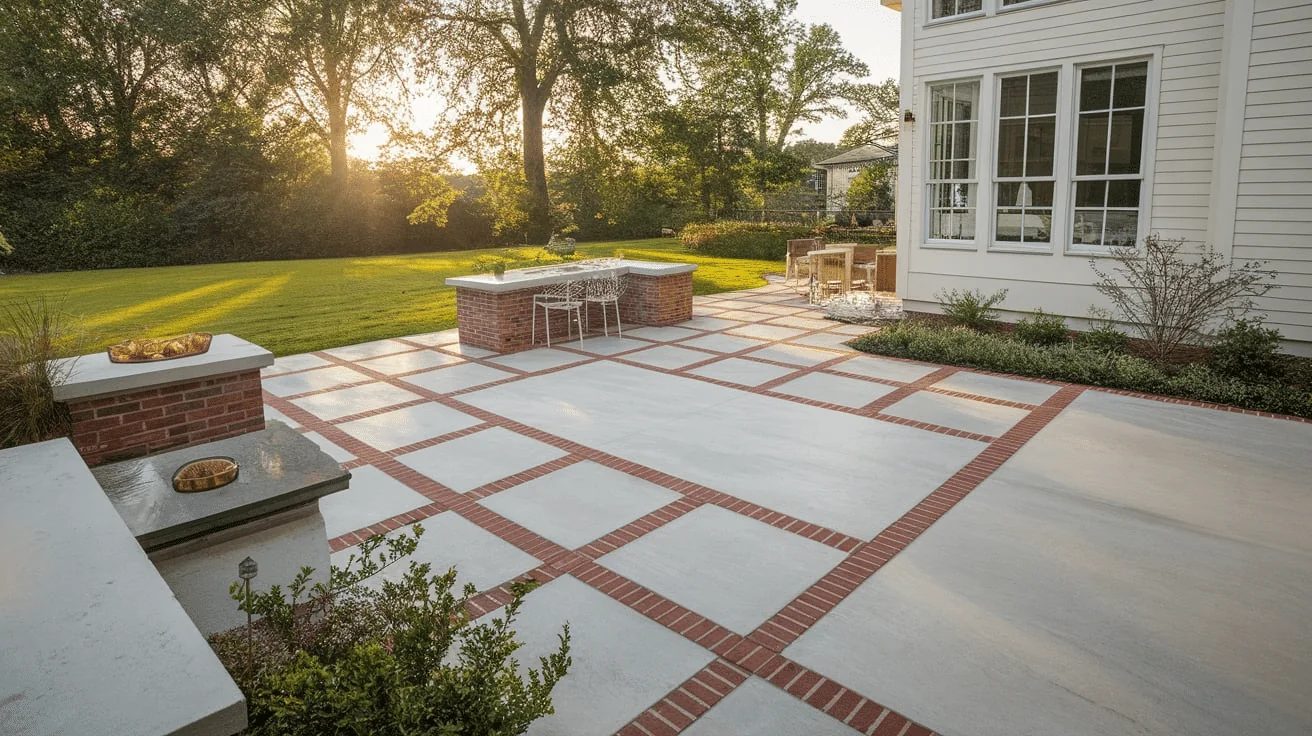
A brick border gives your patio a timeless, classic look. You can lay the bricks flat or stand them up for a raised edge. Bricks come in many colors, so it’s easy to match or contrast with your concrete. They’re strong and last for years with little maintenance.
2. Stone Border
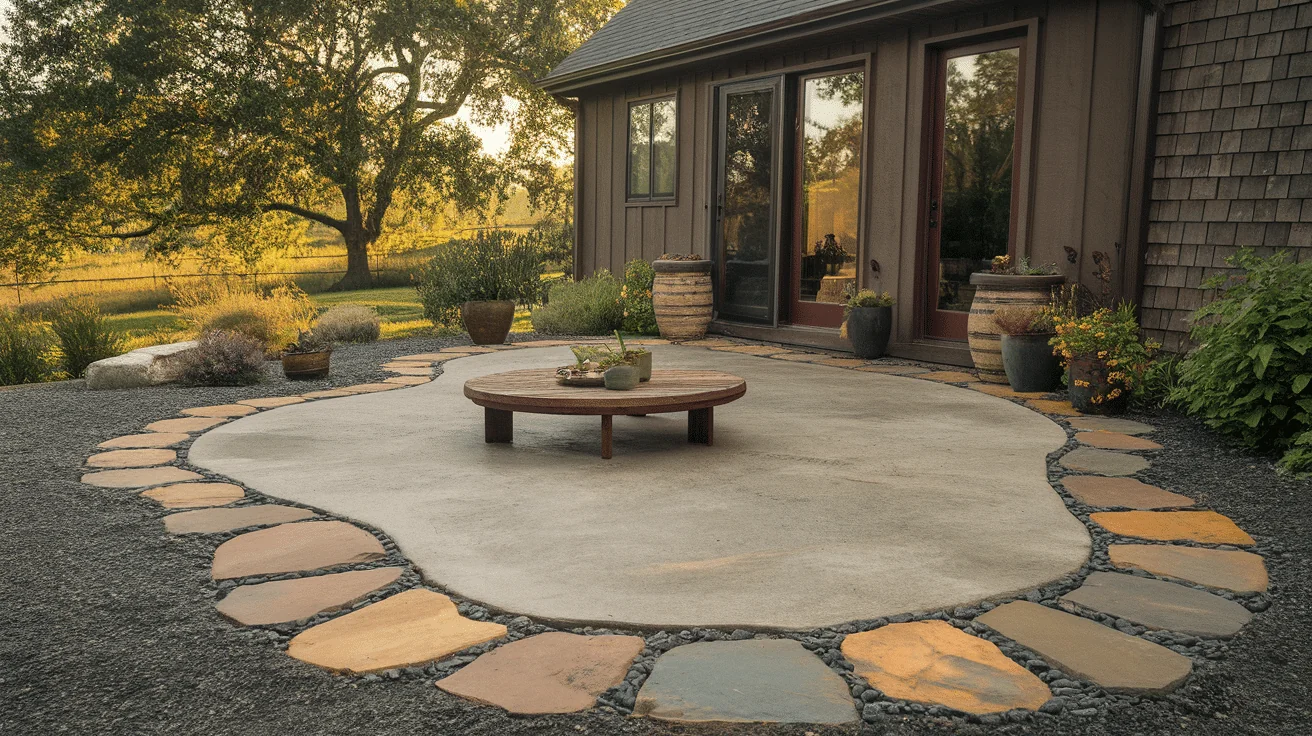
Natural stone adds a rustic and earthy feel to your patio. Each stone is unique, which gives your border a one-of-a-kind look. Stones like slate, flagstone, or river rock are great options. They work well in gardens or yards with lots of greenery. They’re also very durable and can handle all kinds of weather conditions.
3. Paver Border
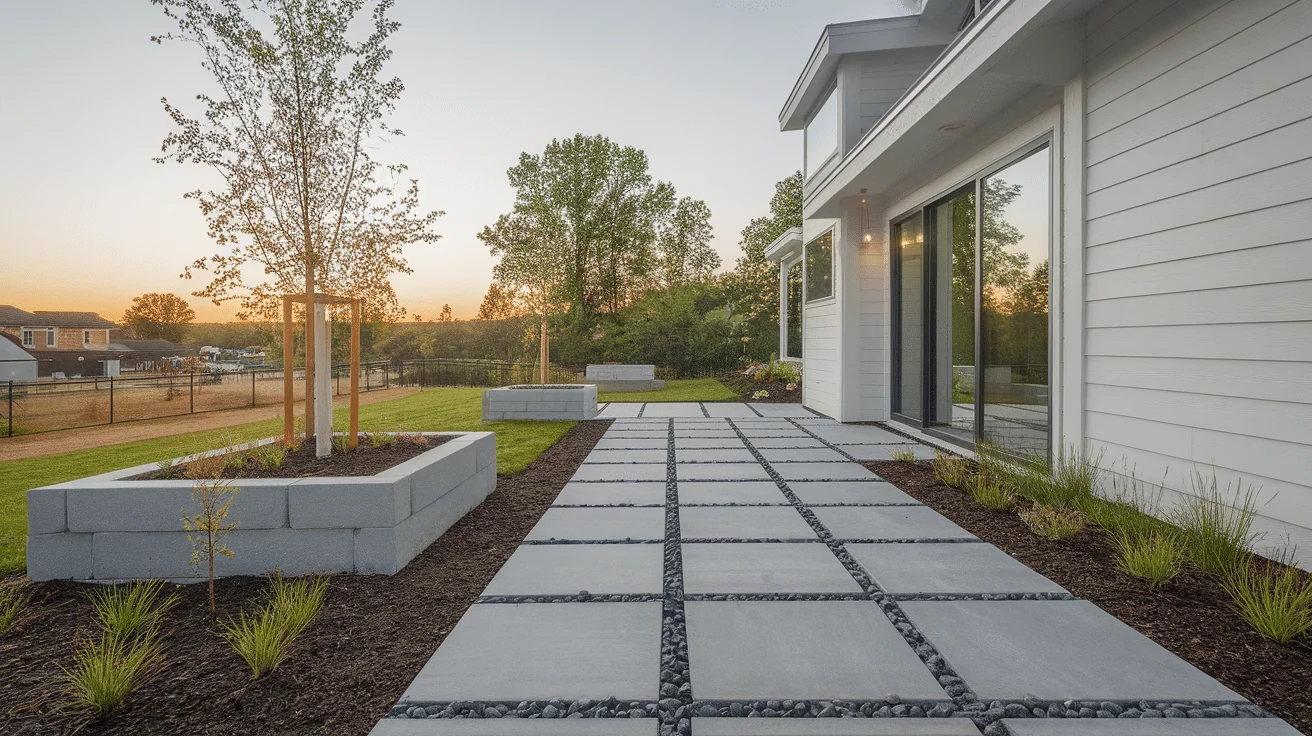
Pavers are like bricks but come in many shapes and patterns. You can create a smooth, even edge or something more creative. They’re strong and easy to install, which makes them a great DIY choice. Pavers also come in different colors and textures.
4. Gravel Border
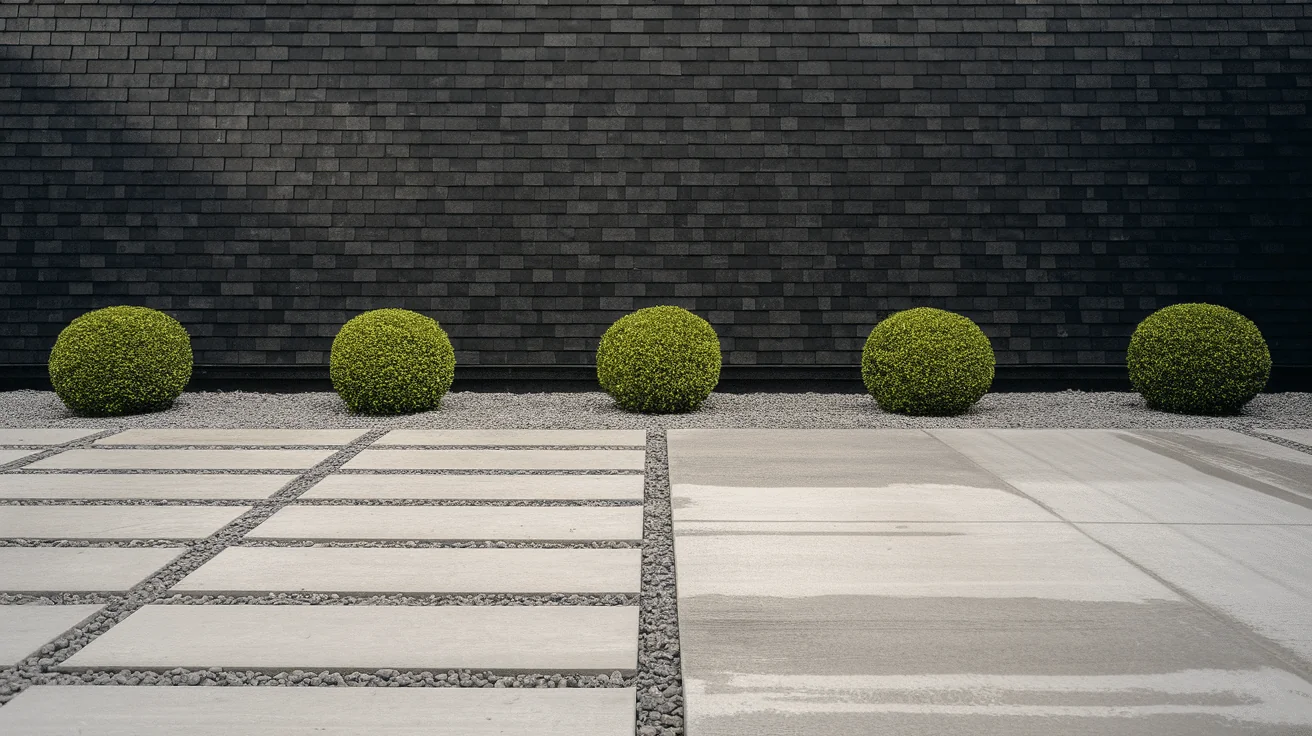
Gravel is simple, affordable, and easy to work with. It creates a nice contrast with smooth concrete and helps with drainage. You can use it to separate the patio from grass or flower beds. Try using a metal or plastic edge to keep the gravel in place.
5. Stamped Concrete Edge
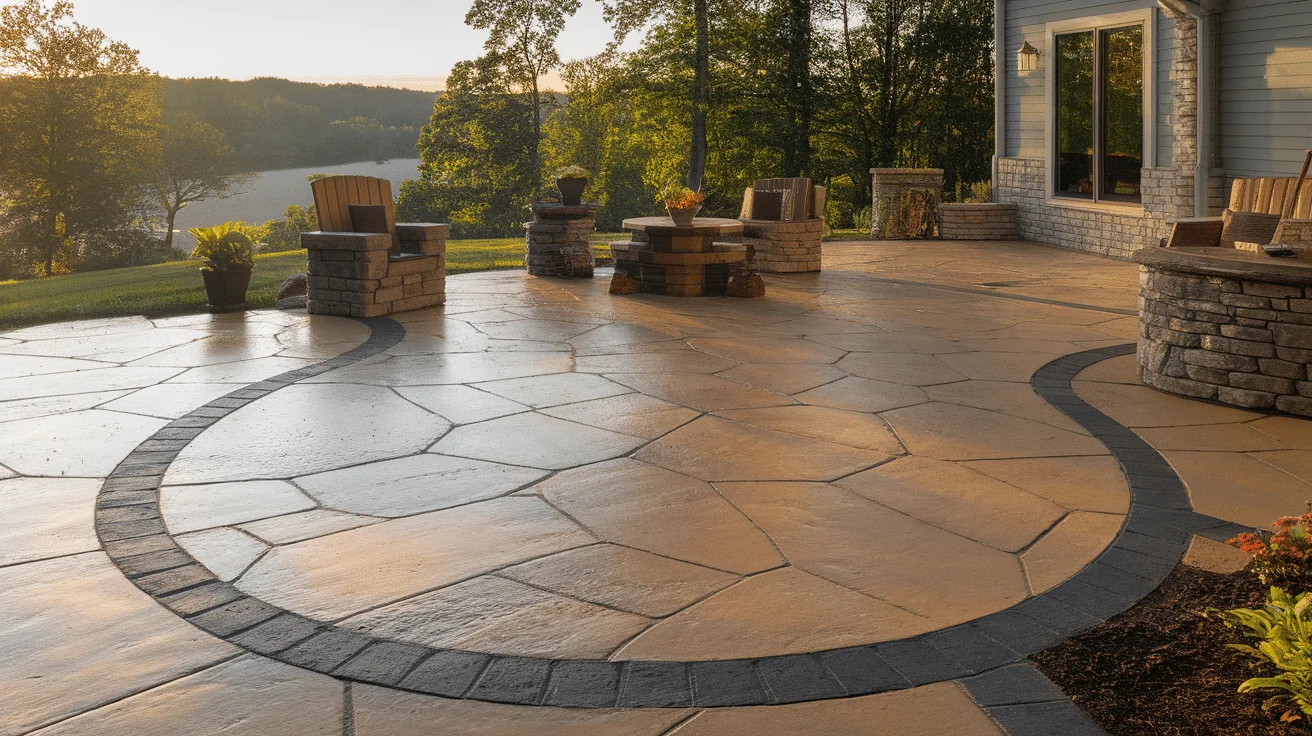
Instead of adding a new material, you can stamp a border pattern into the concrete itself. It looks like stone, brick, or wood without using separate pieces. This is a great low-maintenance option that still looks stylish and detailed.
You can also choose from different colors and textures to match your design.
6. Wood Border
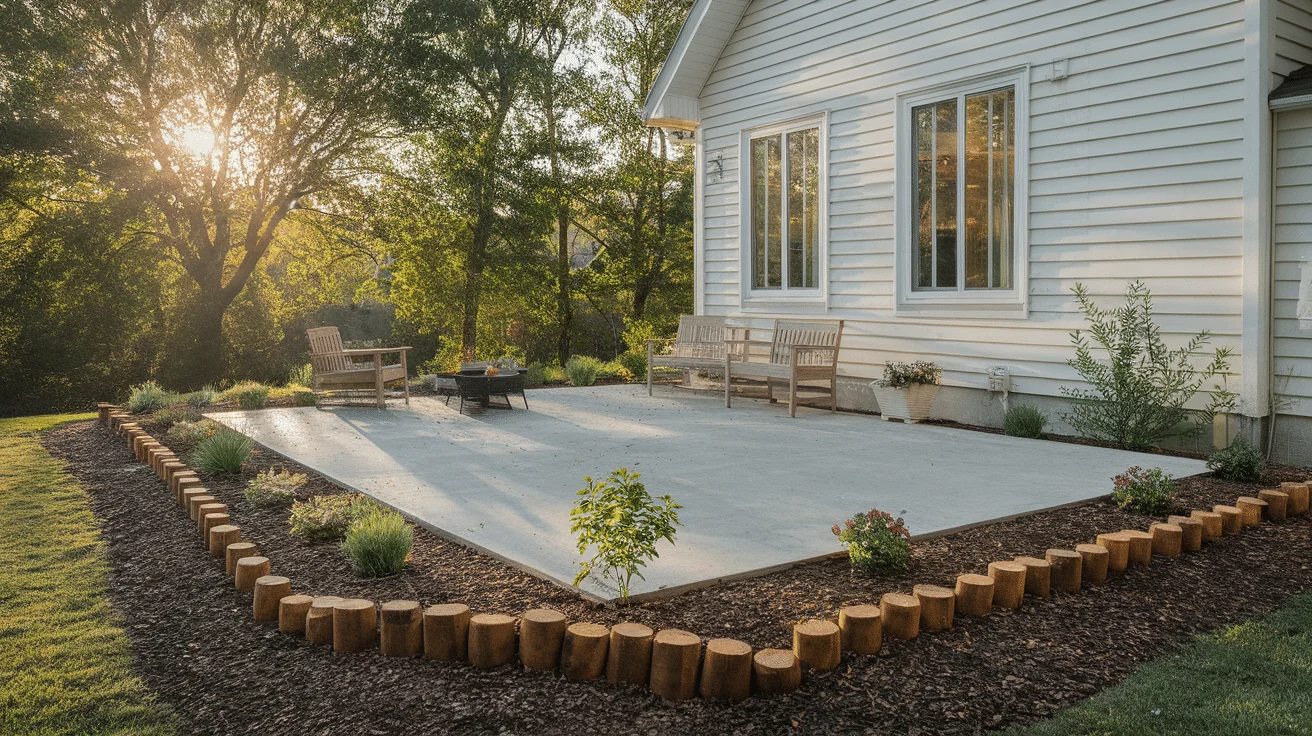
Using treated wood or landscape timbers creates a natural and warm border. It works well in rustic or garden-style yards. Be sure to seal the wood so it doesn’t rot or get damaged by rain. Wood is easy to cut and shape to fit your patio.
You can even stain it to match other wood features in your yard.
7. Metal Edging
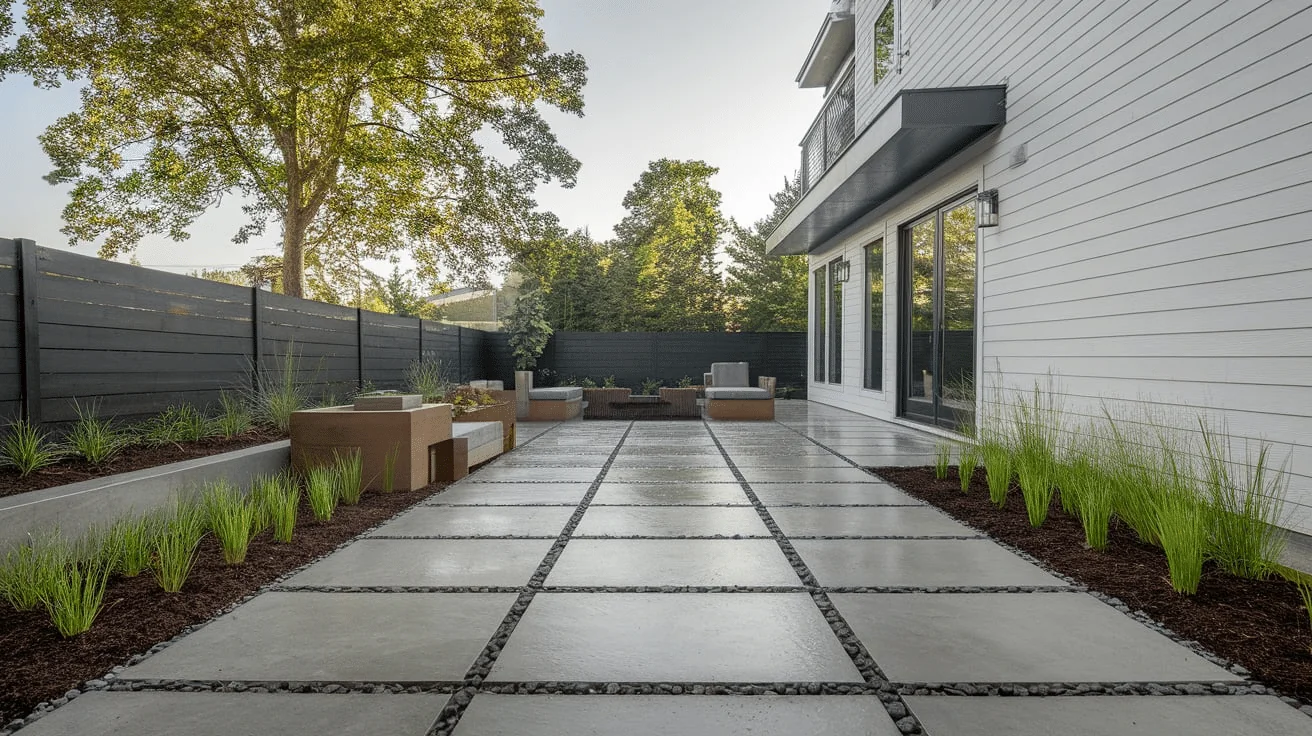
Metal borders give your patio a clean, modern look. Aluminum and steel are both strong and long-lasting. They’re thin and subtle but still help keep mulch or gravel in place. This is a great choice if you want something simple and low-profile.
Metal edges also hold their shape well and don’t shift over time.
8. Cobblestone Border
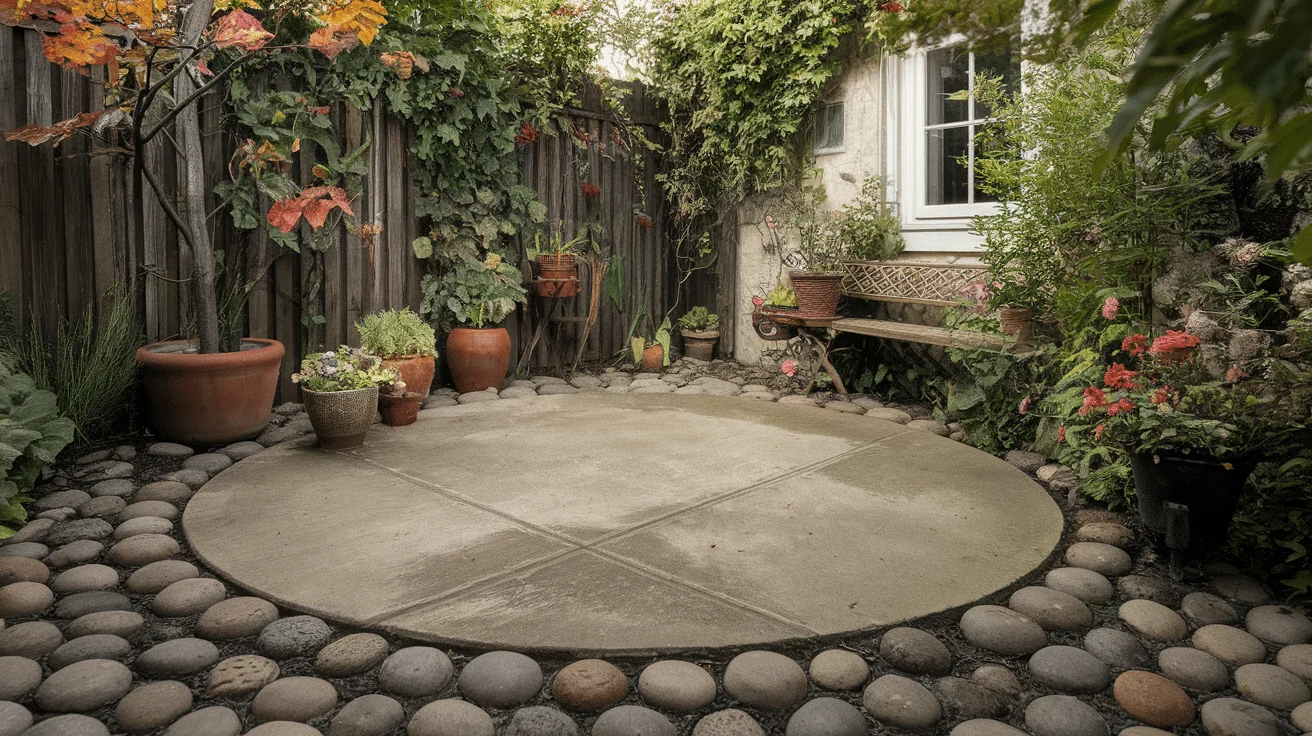
Cobblestones add an old-world look to your patio. They’re usually rounded and slightly uneven, which gives your border a lot of texture. This style works best with traditional or cottage-style homes. Cobblestones are heavy and durable, so they’ll last a long time.
9. Tile Border
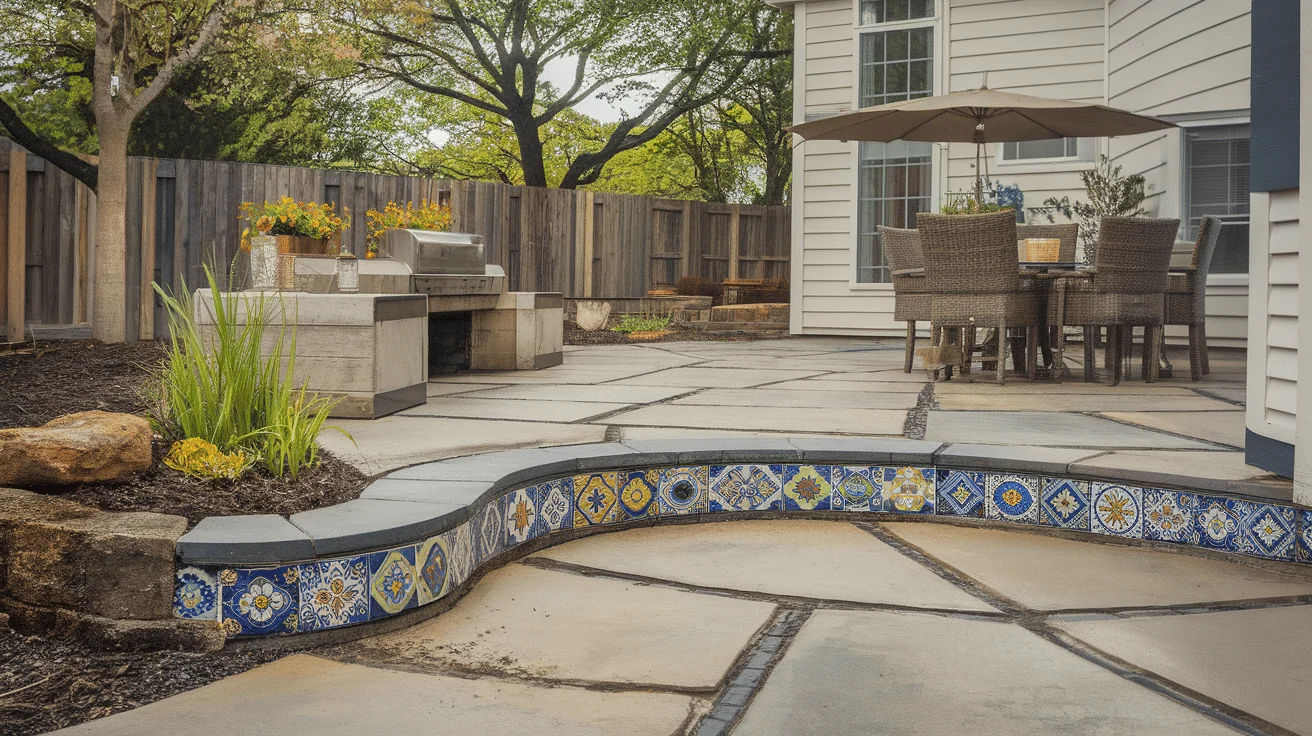
Using outdoor tiles around your patio can bring in color and pattern. Choose tiles that are made for outdoor use so they don’t crack. This idea is perfect for patios where you want a decorative and creative touch. You can go bold or keep it simple.
10. Concrete Curbing
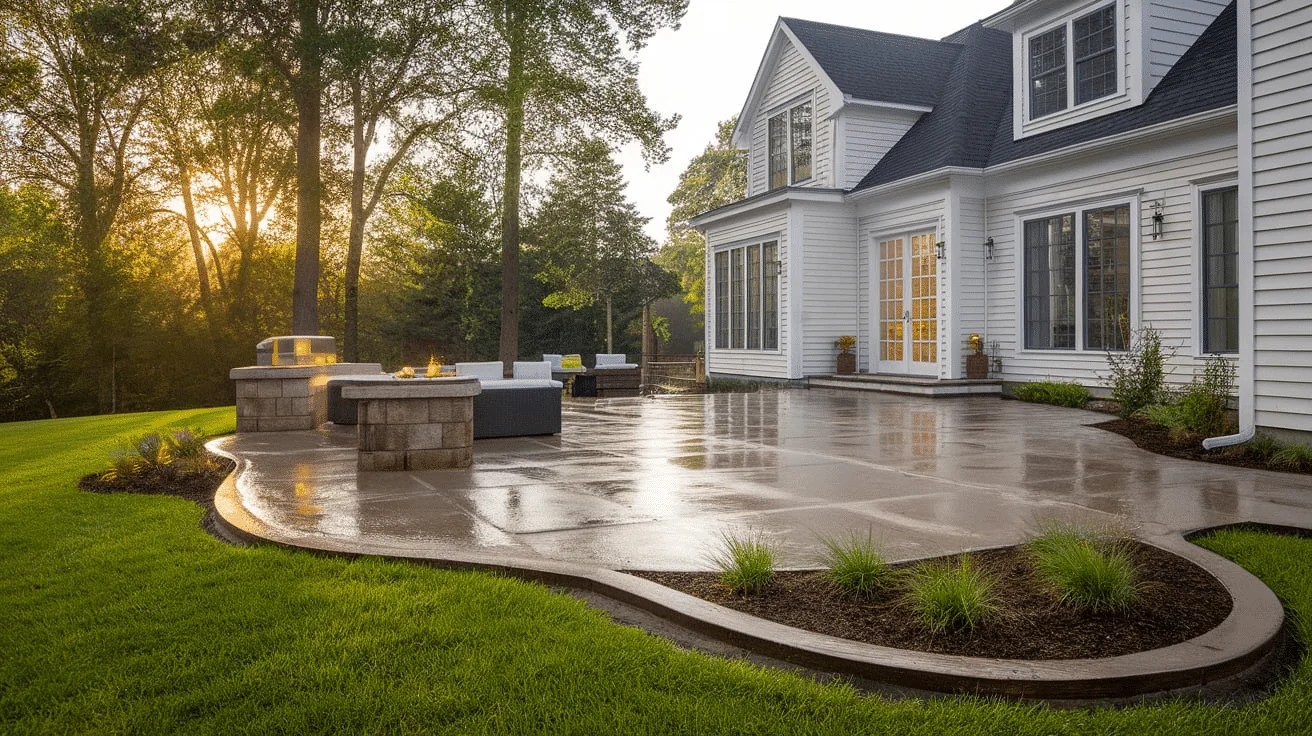
Concrete curbing is poured in place and shaped however you like. It gives your patio a smooth, finished edge that’s strong and clean. You can even color or texture the curbing to match your patio. It’s a good choice for a long-lasting style. Once installed, it needs very little upkeep and stays firmly in place.
11. Mosaic Tile Border
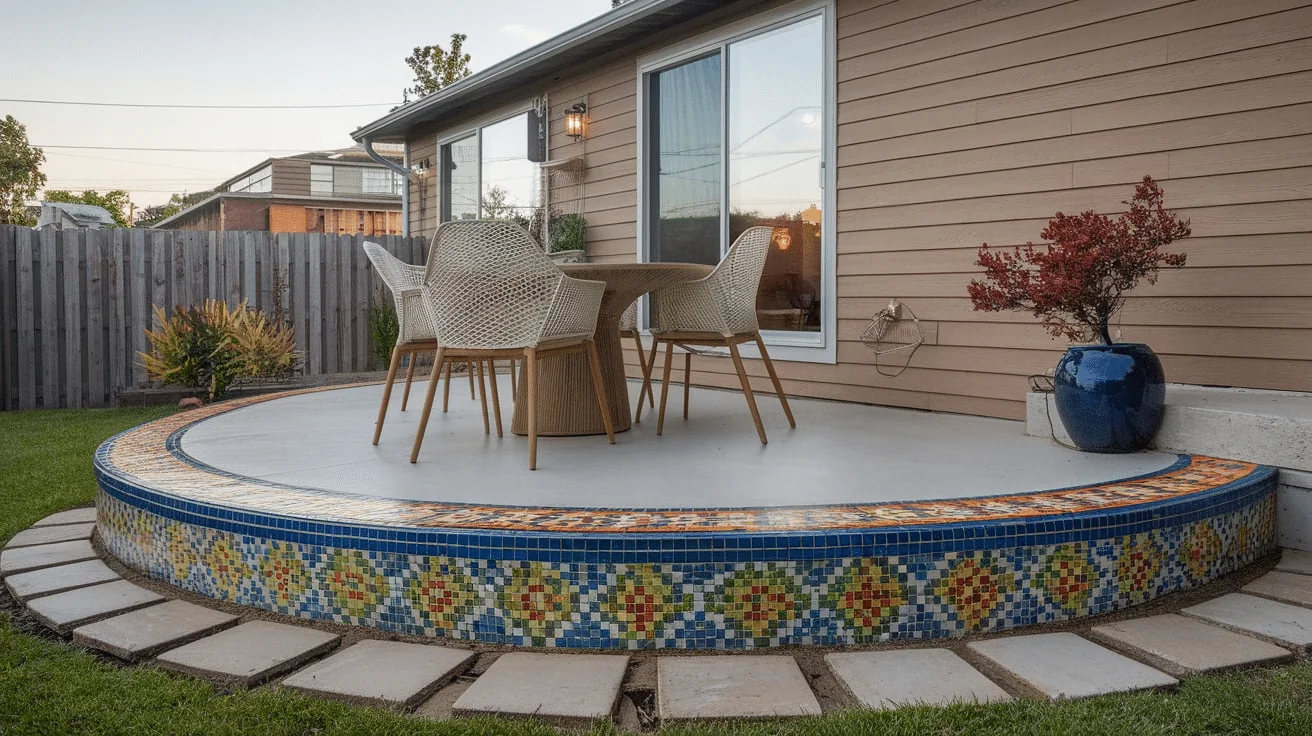
If you want something truly unique, try a mosaic border. Use small pieces of colored tile, glass, or stone to create a fun design. This adds a pop of color and personality to your patio. It takes time, but the result is worth it. You can customize patterns to match your taste or theme.
12. Plastic Landscape Edging
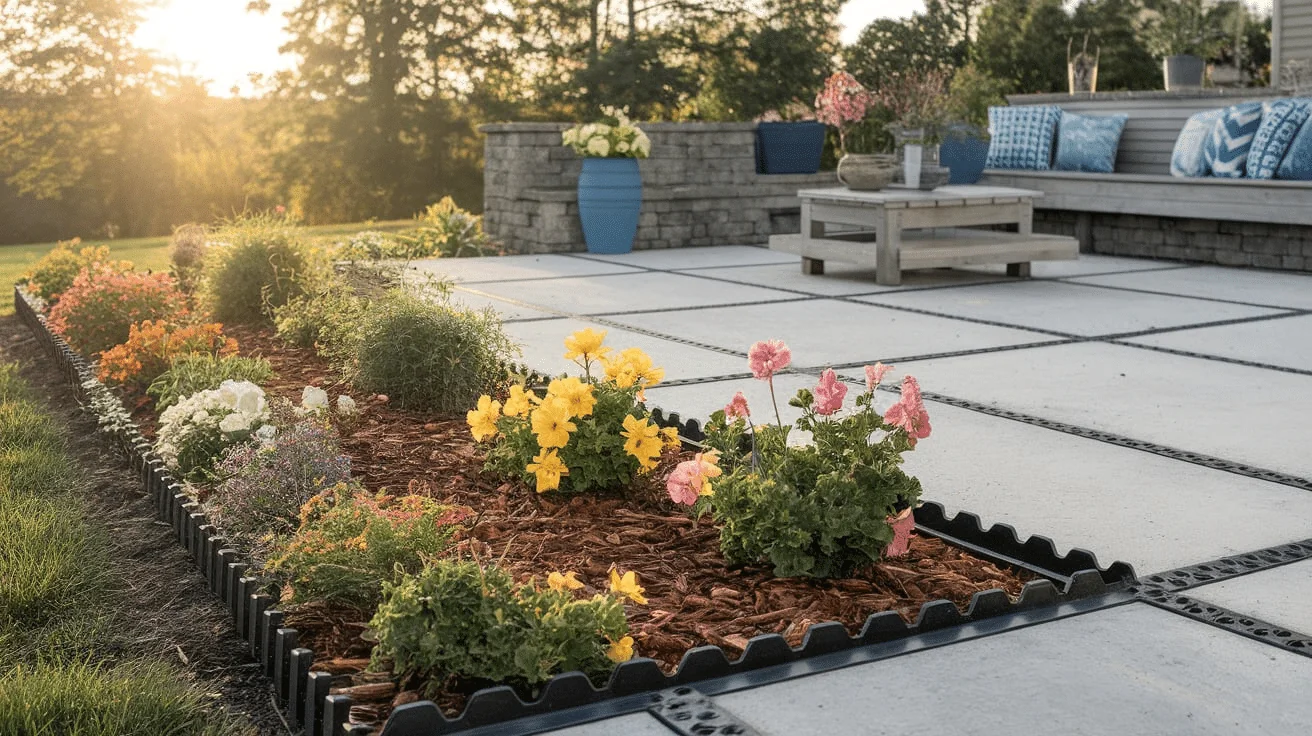
Plastic edging is affordable and easy to install. It bends to fit any shape and helps keep grass or mulch out of your patio space. While it’s not the most decorative, it’s a great starter option for a clean and tidy border. It’s also lightweight and available at most home improvement stores.
13. Decorative Rock Border
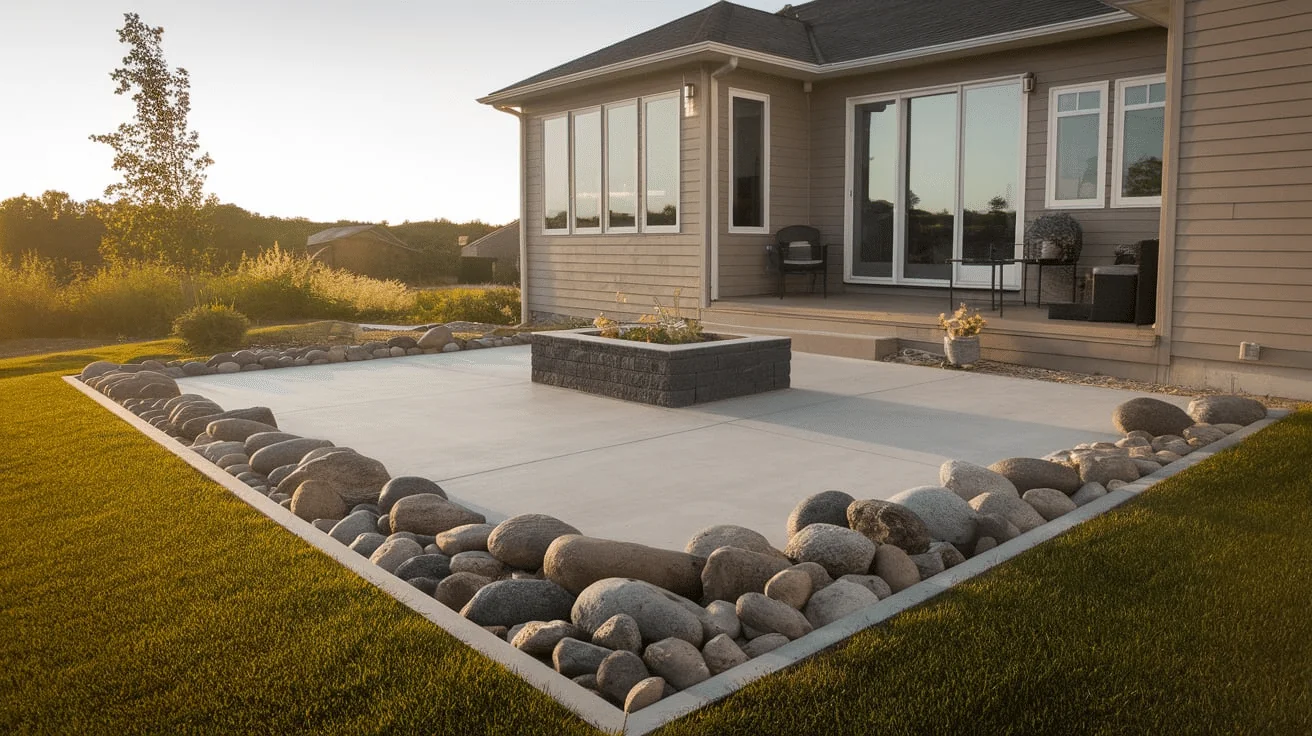
Use large decorative rocks to line your patio. This adds a bold, natural edge that blends well with gardens or lawns. You can mix rock colors or sizes to create a custom look. Rocks also help with drainage and prevent soil from washing away. They’re also a great choice for low-maintenance landscaping.
14. Grass Strip Border
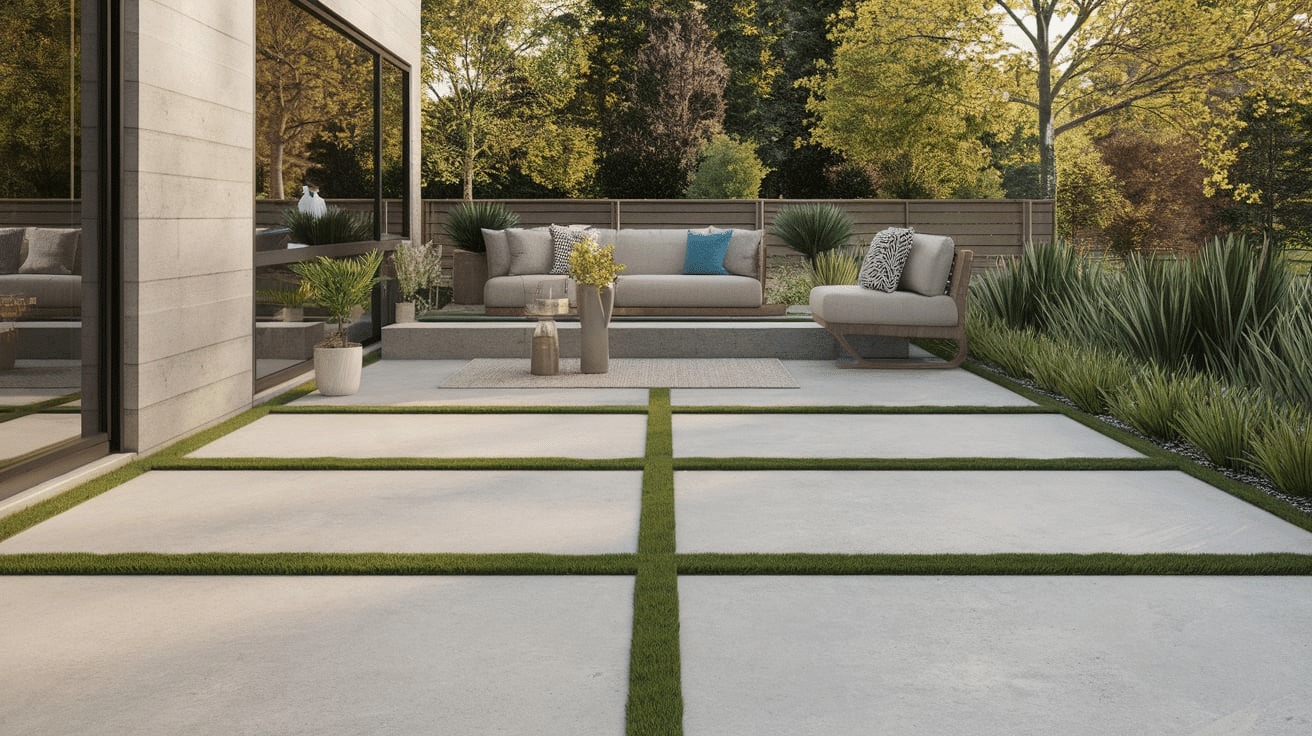
Leaving a narrow strip of grass between your patio and the rest of your yard can look neat and natural. It softens the edge of the concrete and makes the space feel more open. Just be sure to keep the grass trimmed so it doesn’t grow over the patio.
15. Mulch Border
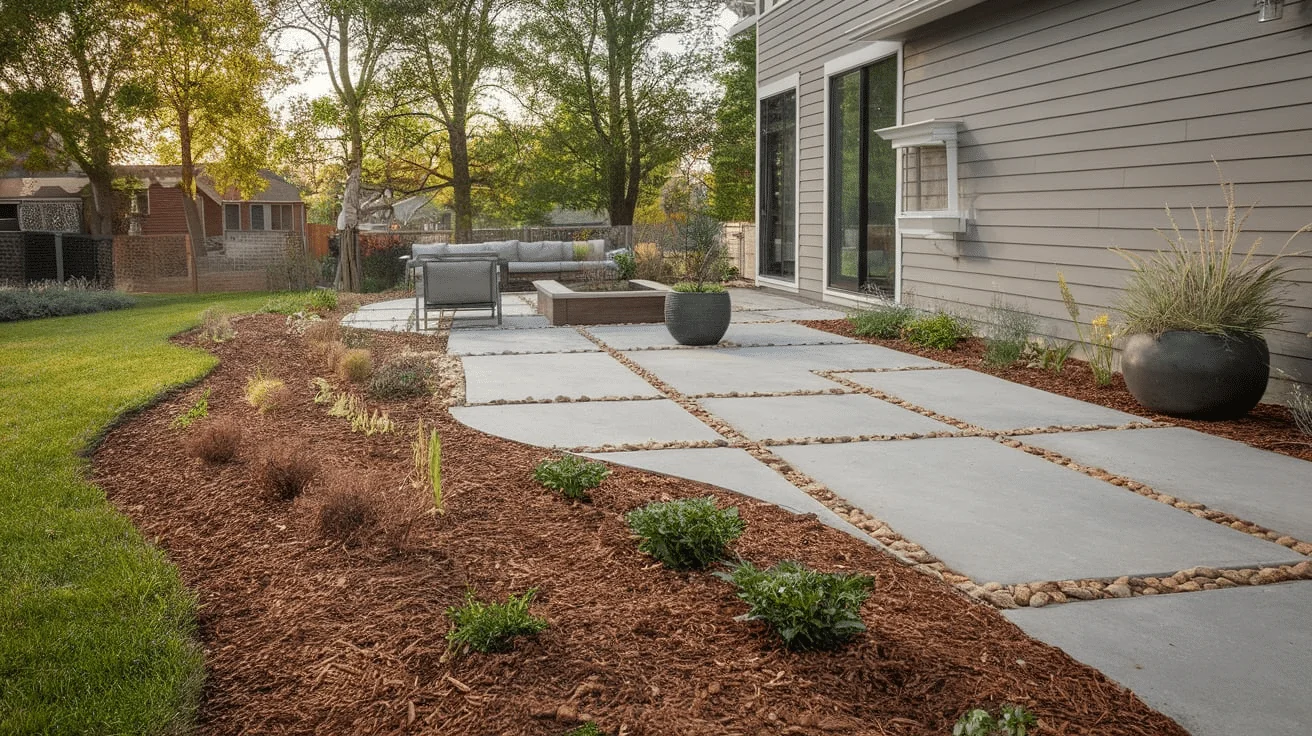
Mulch is an easy and budget-friendly way to border your patio. It works great next to garden beds or under trees. Mulch gives a soft, natural look and helps keep weeds down. Use edging to stop it from blowing onto your patio. It also helps the soil hold moisture, which is great for nearby plants.
16. Edging Stones
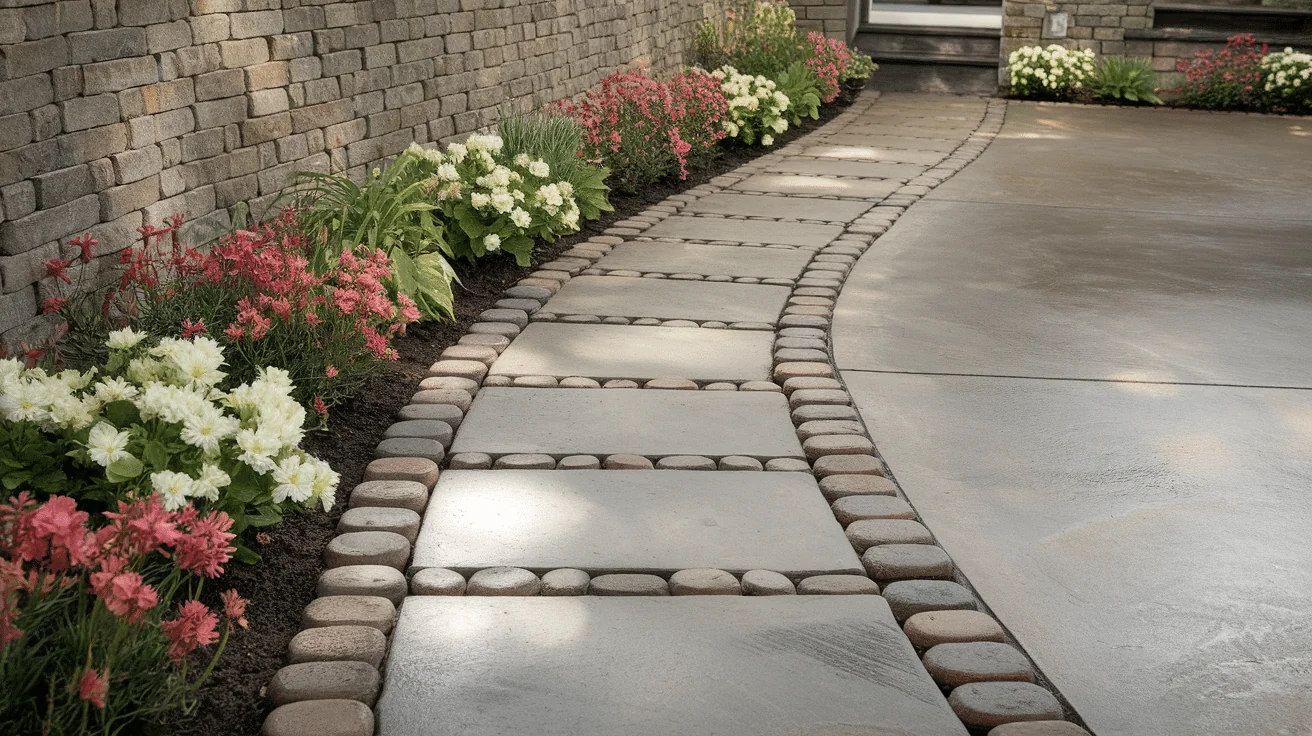
You can buy pre-cut edging stones at most home stores. They’re usually flat on one side and curved on the other. Lay them in a straight line or curve them around your patio. They’re simple to install and give your border a finished look. They also come in different colors and styles to match your patio design.
17. Raised Planter Border
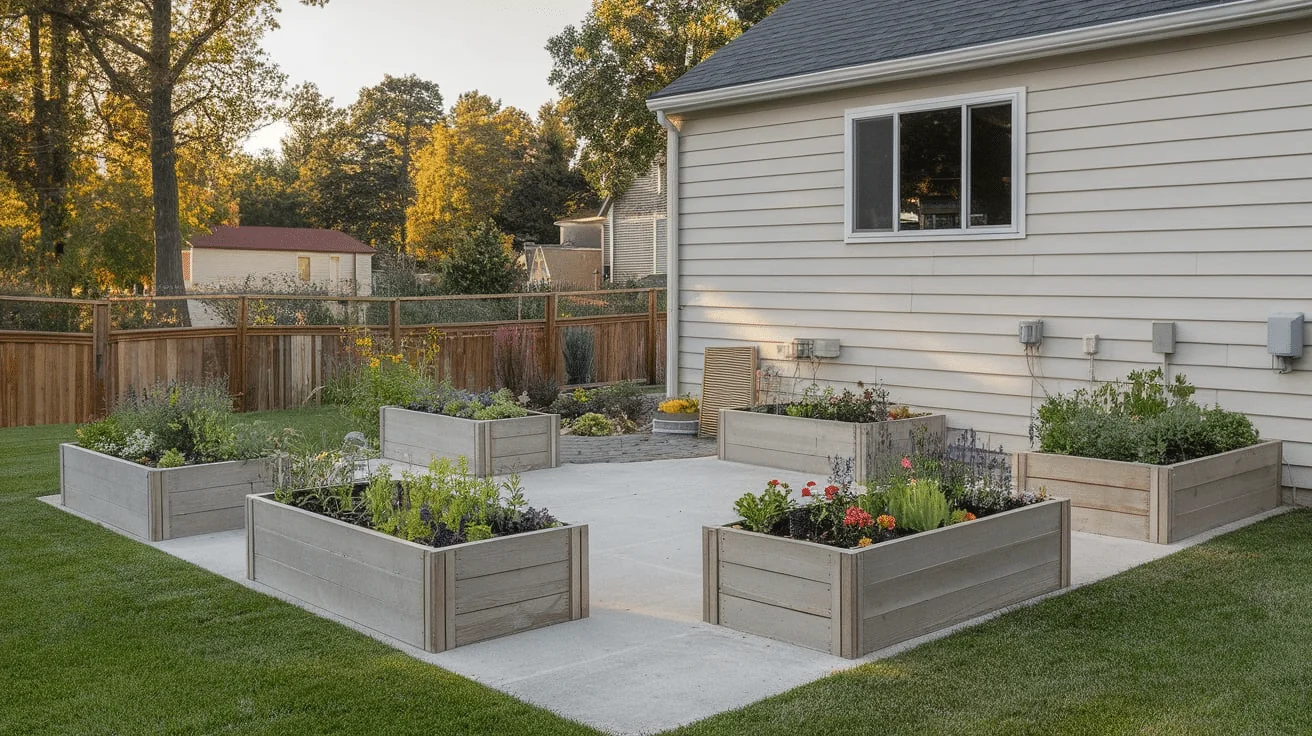
Build a small raised bed around your patio using wood, brick, or stone. Then, fill it with flowers, herbs, or small shrubs. It adds color and life to the space and makes your patio feel cozy and inviting. Great for small yards or garden lovers! Plus, raised planters make gardening easier since you don’t have to bend down as far.
18. Timber Sleepers
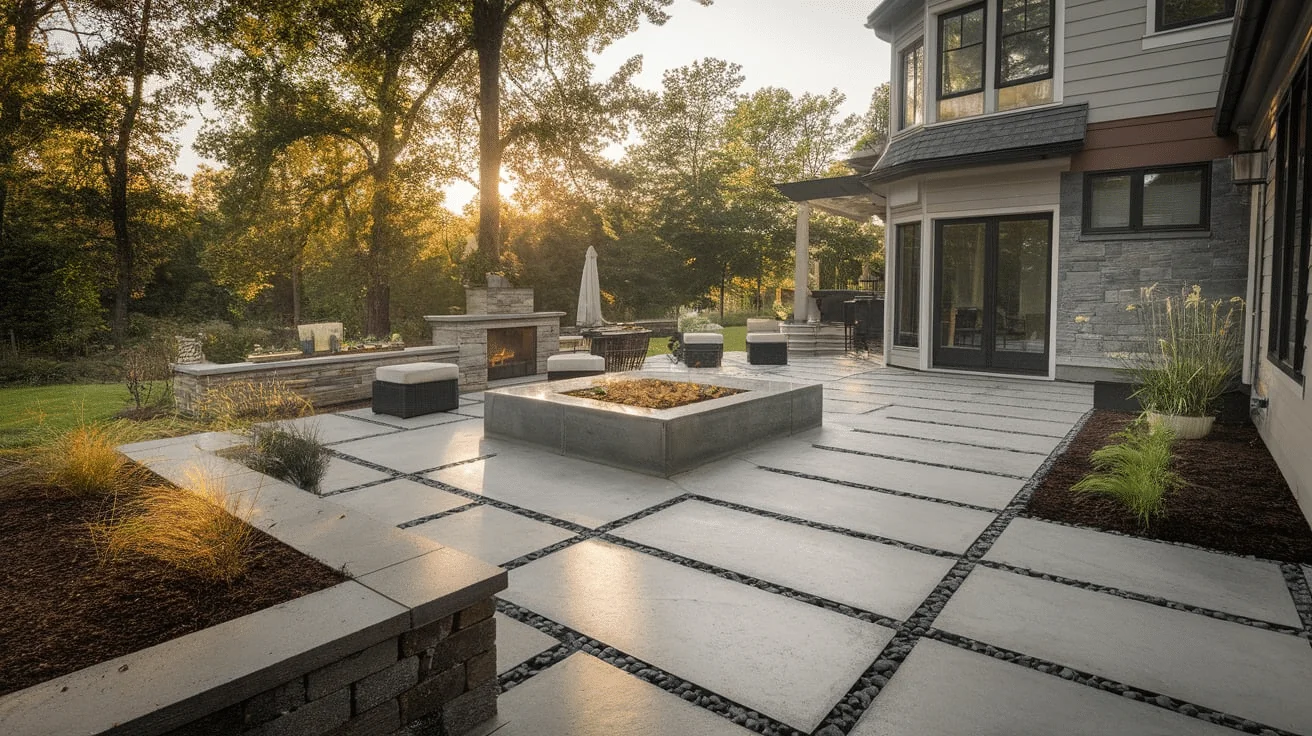
Timber sleepers are large wooden beams used for borders. They create a bold, natural edge and can double as seating if placed flat. They work well in rustic or earthy-style patios. Make sure they’re treated to resist water and bugs. They’re also strong and sturdy, making them great for heavy-duty outdoor use.
19. Blended Border
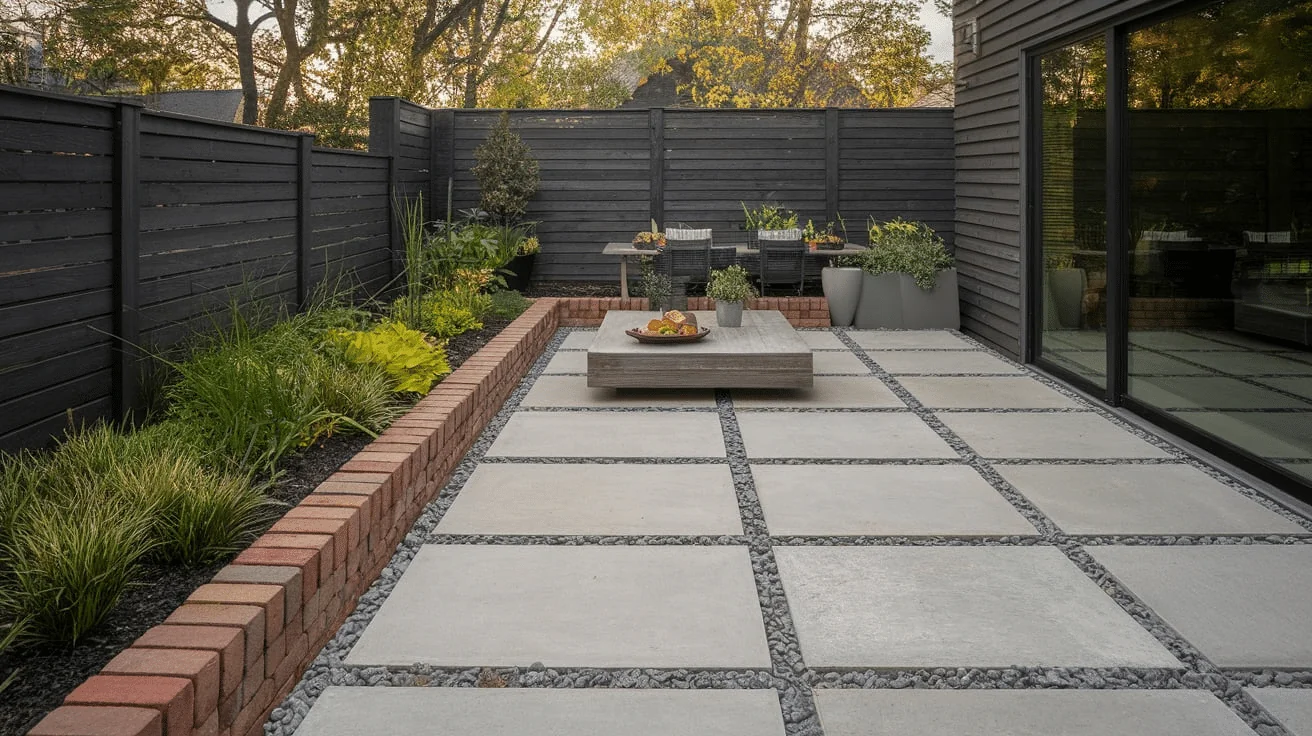
Mix two or more materials for a custom look—like stone and mulch or brick and gravel. This adds texture and interest while giving your patio a one-of-a-kind design. It’s a great way to get creative and match different areas of your yard. Blended borders also help tie together different features in your outdoor space.
With so many border options, it’s easy to find one that fits your style and budget. Pick your favorite and give your patio that perfect final touch!
Styling and Personalizing Your Patio Border
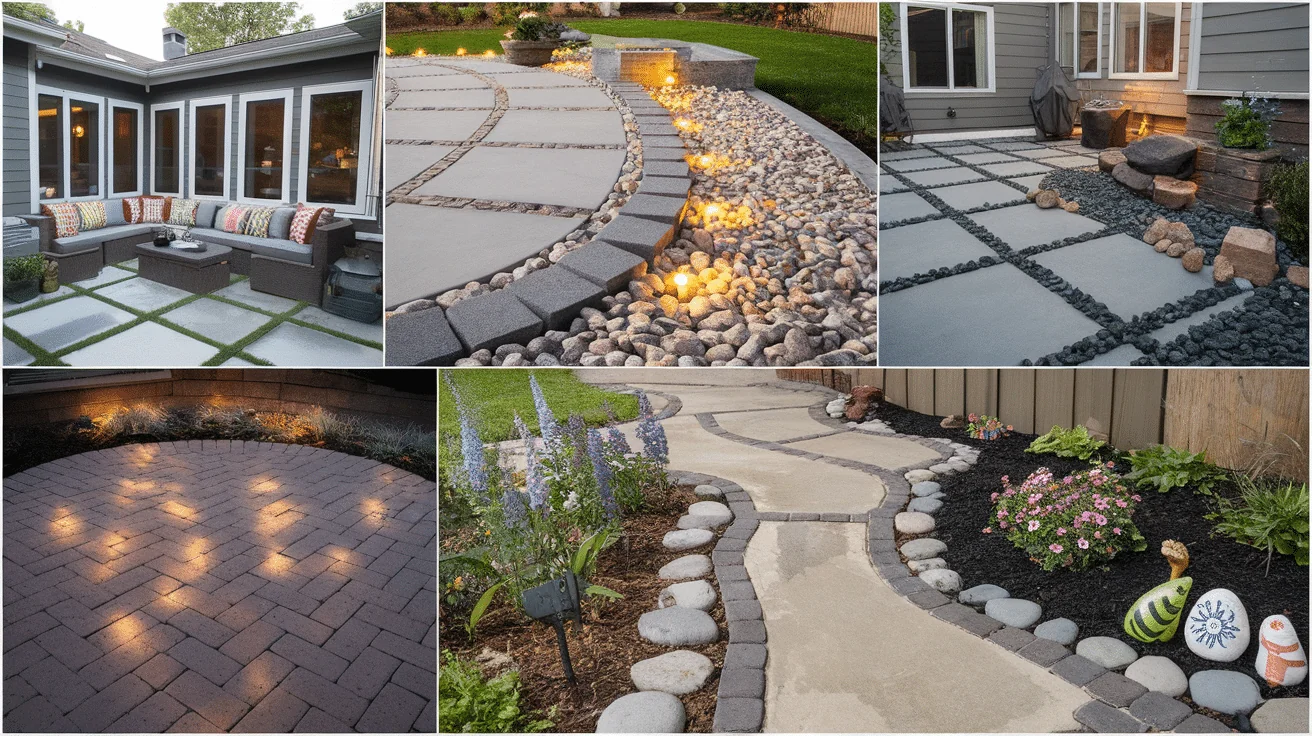
Your patio border doesn’t have to be boring—it’s a great chance to show off your style! With the right colors, textures, and design touches, you can turn a simple border into something special that reflects your taste and adds character to your outdoor space.
1. Choose Colors That Match Your Vibe: Go bold with deep tones like black, red, or navy, or keep it calm with soft earth tones and neutrals. Match the border color to your patio furniture, flowers, or even your house trim.
2. Mix and Match Materials: Don’t be afraid to blend two styles! Try combining brick and stone or using gravel between pavers for a modern, textured feel. Mixing materials adds personality and can make your border stand out.
3. Add Lighting: Little solar lights or LED strips along your border can make your patio look magical at night. They also help define the space and improve safety after dark.
4. Use Patterns or Shapes: Lay bricks or pavers in fun patterns like herringbone or curves instead of straight lines. This small change can totally change the look and make your space feel more custom.
5. Plant Along the Edge: Add small flowers, herbs, or ground cover plants next to your border for a soft, colorful touch. This blends nature with structure and brings life to the edge of your patio.
6. Decorate with Accents: For extra style, place a few garden statues, pots, or even painted stones along your border. These small details make the space feel more inviting and reflect your personality.
Styling your patio border is all about making the space feel like *you*. Whether you love modern designs, cozy cottage vibes, or something fun and bold, there are endless ways to personalize your border and make your patio truly one of a kind.
Installing Concrete Patio Borders: DIY vs Professional Help
Are you thinking about adding a border to your concrete patio? One of the first things to decide is whether to do it yourself or hire a pro. Both options have pros and cons, so it depends on your time, skills, and budget.
DIY Installation
Doing it yourself can save money, especially if you’re using simple materials like gravel, bricks, or plastic edging. It’s a great choice if you enjoy hands-on projects and already have some tools. You can work at your own pace and customize the design how you like. Just be ready to dig, level, and measure carefully to get a good finish.
Hiring a Pro
If you want a more complex look—like stonework, poured concrete edging, or custom shapes—a pro can make sure it’s done right. Professionals have the tools and experience to get the job done quickly and cleanly. While it costs more upfront, the results often last longer and need less fixing later.
If your project is small and simple, DIY might be just fine. But if you want a long-lasting, polished result or a more detailed design, hiring a pro is usually the better choice. Either way, a great patio border is worth the effort!
Maintenance and Care for Patio Borders
Once you’ve added a border to your patio, keeping it in good shape is key. With a little care, your border will stay strong, clean, and nice-looking for years.
1. Keep It Clean: Dirt, leaves, and weeds can build up along the edges. Sweep or rinse your patio border regularly to keep it looking neat. If you have gravel or mulch, use a rake to smooth it out and remove debris.
2. Watch for Weeds: Weeds love to grow in cracks or between border stones. Pull them out by hand or use a weed killer that’s safe for nearby plants. Adding landscape fabric under gravel or stone can help stop weeds before they start.
3. Check for Damage: Every few months, walk around your patio and look for cracks, loose bricks, or shifting stones. Fixing small issues early can prevent them from turning into bigger problems.
4. Reseal When Needed: If your border is made of wood, concrete, or natural stone, sealing it can help protect it from water, sun, and stains. Reseal every 1–3 years, depending on the material and weather in your area.
5. Refill Gaps or Edges: Gravel and mulch borders might thin out over time. Just add more when needed to keep the border even and full. For pavers or stones, replace any missing sand or filler between the joints.
6. Trim Overgrowth: If your border includes plants or a grass edge, make sure to trim it back so it doesn’t grow over the patio. A clean edge helps the border stand out and keeps everything looking sharp.
With just a little effort a few times a year, your patio border can stay looking fresh and strong. A well-maintained border adds character and keeps your outdoor space neat and safe.
Conclusion
Adding a border to your concrete patio is a simple way to upgrade your outdoor space. It not only makes your patio look more finished, but it also helps keep things neat and organized.
With so many styles to choose from—like brick, stone, gravel, or wood—you can easily find a border that fits your home’s look and your budget. Just make sure to think about your climate, maintenance needs, and whether you want to tackle the project yourself or hire a pro.
Once your border is in place, a little care now and then will keep it looking great for years. Whether you want a bold, decorative edge or something natural and simple, the right border can really bring your patio to life. Take your time and create a space you’ll love to use all year round.

